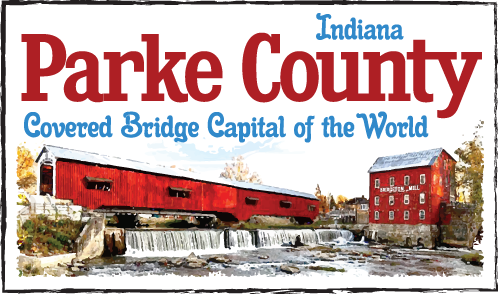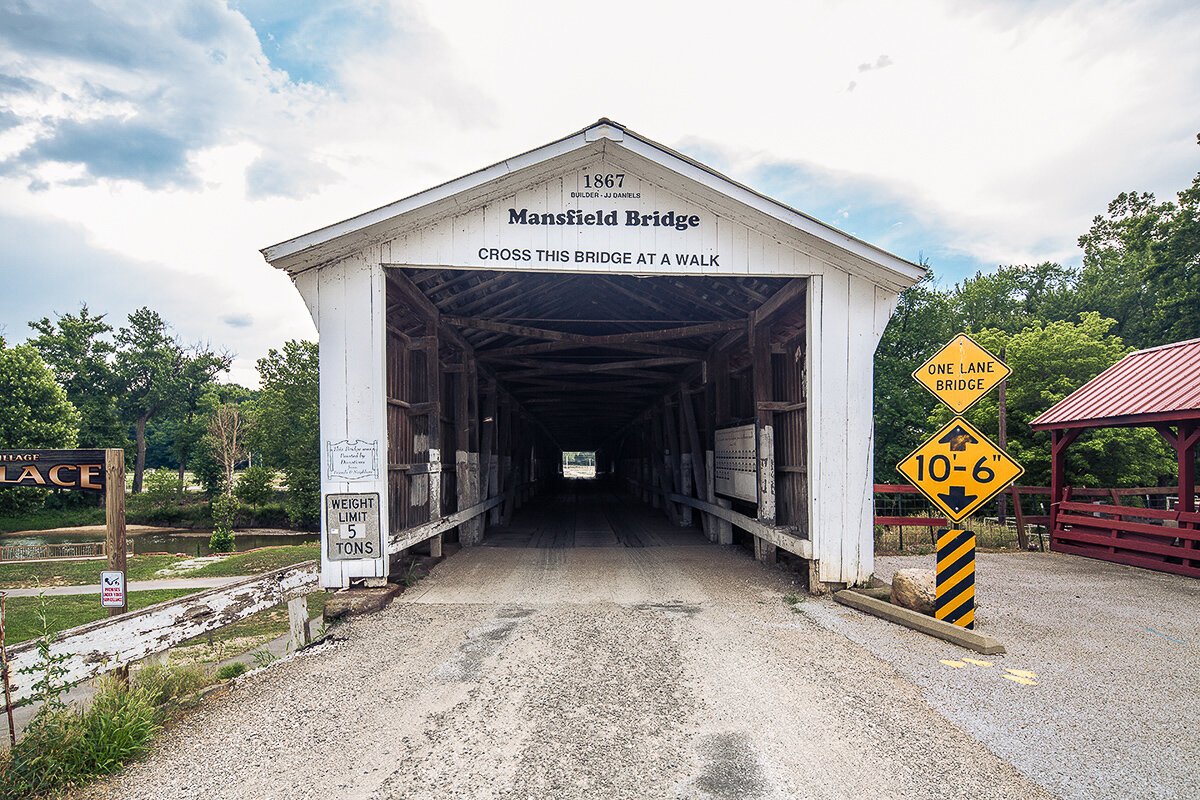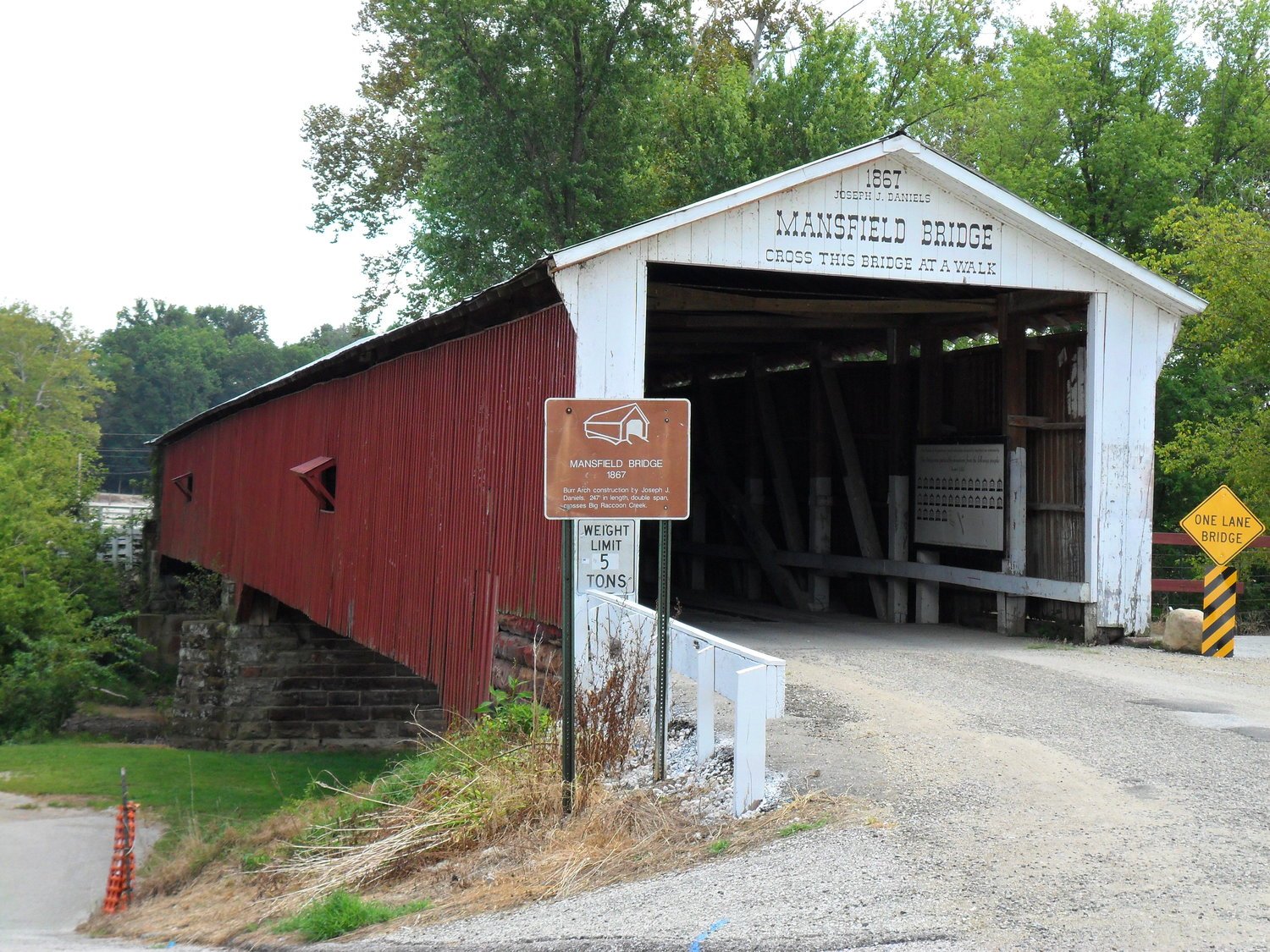Mansfield Covered Bridge (#5)
Built: 1867
Builder: Joseph J. Daniels
Creek: Big Raccoon
Location: Located in Mansfield near Mansfield Mill and mill dam.
Reference Code: #5 14-61-20, 12-61-21, gb, Jackson 8-14N—6W
Size: 247 ft long +16’+16’, 16 ft wide, 10’-6” clearance
Truss: Double Burr Arch 2 Span
Foundation: Hewn limestone block
Original Cost: $12,200
Repair/Restoration History: Closed for repairs in 1980. Abutments, roof and deck repaired. Roof and deck replaced October, 1990 by County Highway Department.
Bridge History: James Kelsey and wife came to the Mansfield area from Ireland in 1819. Later, he and Francis Dicksen erected a mill in about 1820. Others who assisted included William Bullington, Thomas Wolverton, Bliss Kelley Nelson, Hubbard, Kelsey, and Dicksen. The village was on the Indian trail from Orchard Town (in Terre Haute) to Cornstalk, an Indian village in Sugar Creek Township. The mill was about 30 feet square and the foundation of the mill and dam was an unbroken floor of red sandstone.
The village was called New Dublin, named after the Irish city.
A sawmill was attached to the north side of the mill in 1830. It used a sash saw. This was used to saw timbers for the next mill. The first mill had grown to 48 feet by 56 feet and three stories high but was not suited to new machinery.
Jacob Rohm built a new mill in 1880. He bought the mill in 1874 after a freshet destroyed the dam with ice. The new dam was seven feet tall. (A former owner had built up the dam to 9 feet and the water had destroyed a nearby field. A court ordered it reduced to seven feet and it had been extended to protect the field.) The new mill was 26 by 34 feet, 3 1/2 stories high. In about 1892, the Fort Wayne, Terre Haute, and southwestern Railroad built a spur to the red sandstone quarry near Mansfield.
The tracks passed a few feet from the front entrance. The railroad bought the mill to settle the access dispute. After the quarry and railroad failed, the mill was returned to the Rohm Brothers.
In 1913, the old wooden dam was replaced by a concrete one 180 feet long by 7 feet high, reinforced with iron stays and buttresses. One buttress was made into a fish ladder about 40 feet long and 6 feet wide. Colonel Johnston was elected county commissioner in 1866. As some of his opponents predicted, he built a covered bridge in 1867. The ethical questions arose because he owned the land on both sides of the bridge and a new access road had to be built on the east side.
One month after the completion of the Roseville Bridge, J.J. Daniels was appointed to draw up plans and specifications for the Mansfield Bridge. He was awarded the contract on December 7, 1866, and the bridge was completed and inspected September 4, 1867.
Although built in 1867 for wagons, the Mansfield Bridge still has a 10 ton load limit. In one story, while the bridge was still used for state route 59, three loaded oil trucks approached the bridge. The first truck stalled out just before leaving the bridge, and all three trucks came to a stop on the two spans. There was no apparent damage to the strong structure.
The small structure southwest of the bridge is a gauging station. It is used to remotely report the water level and to calculate the rate of water release from Mansfield Reservoir.


